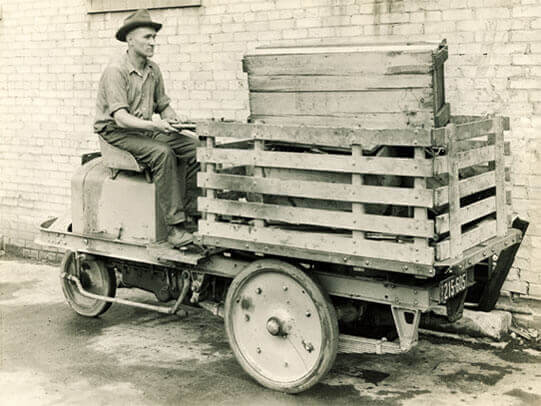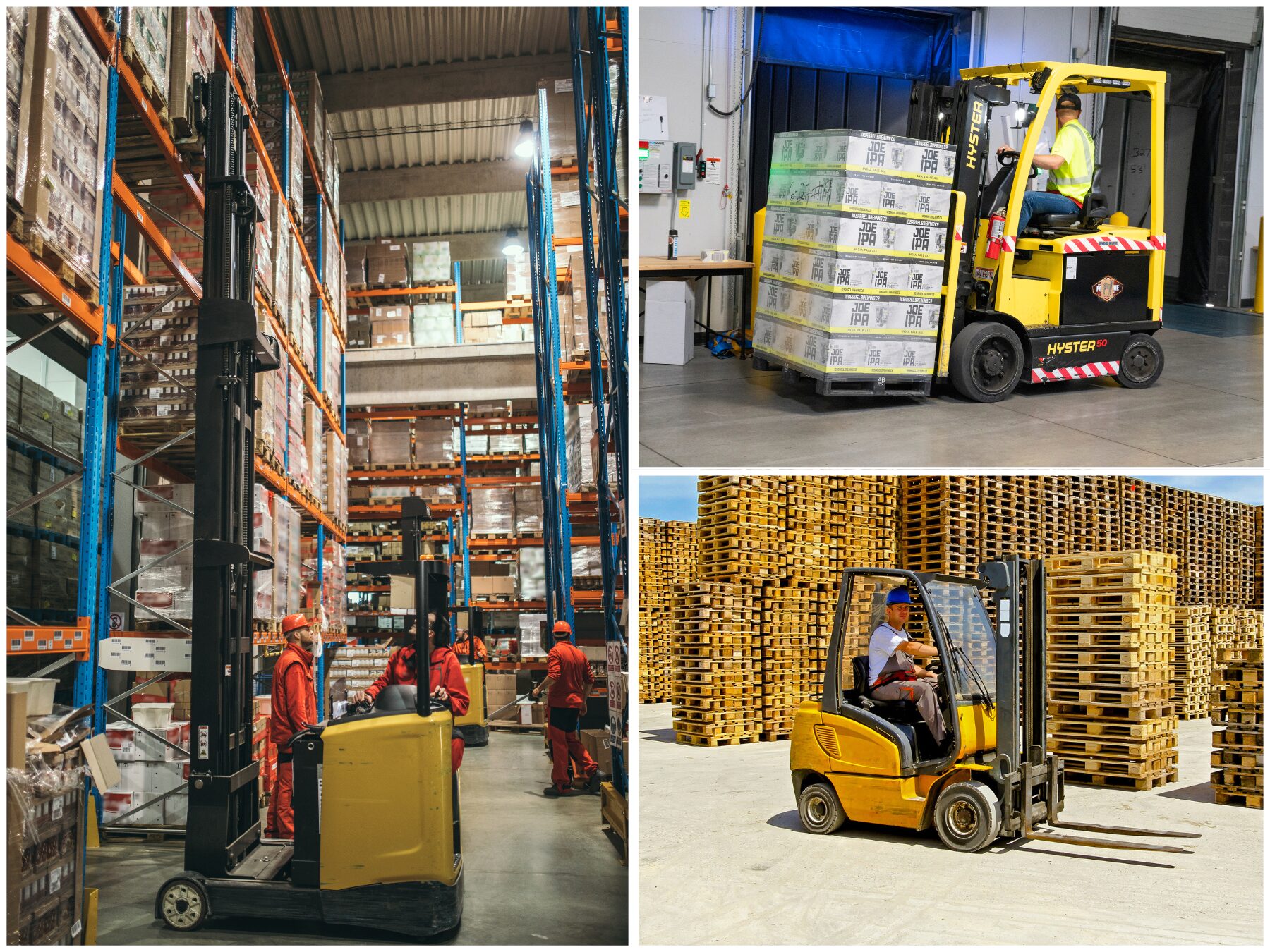Did you know that forklifts have a 120-year history?
To put simply, Forklifts are used to efficiently move heavy goods and bulk materials from one location to another. Often used in warehouses, distribution centres, loading bays, and on construction sites, forklifts are an essential tool in many workplaces, and can significantly improve operational efficiency and workplace safety. Whether you’re loading trucks, stacking pallets, or moving large products, forklifts are essential on most industrial worksites.
In this blog, we’ll discuss the invention and history of the forklift, the different types of forklifts, how to get a forklift licence in Australia, and some general facts about forklift driving.
A Short History of Forklift Driving
The forklift was invented in the early 1900’s out of necessity. Several industries were growing fast and required a more efficient and effective way to relocate heavy goods. The first lifting machines were simple hoists and manually powered lifts.
In 1917, US company CLARK bought the very first “forklift” to life. Built to help workers move large and heavy materials around their factory, CLARK named it the “Tructractor”, the world’s first internal combustion-powered industrial truck. Soon after this development, Yale & Towne (now operating under Yale) created the first battery-powered lift truck in 1923, making forklifts even more useful in indoor environments like warehouses.
Forklifts became even more popular during World War I and II when labour shortages meant machines had to do more of the heavy lifting. The use of pallets also became common during this time. Since World War II, forklifts have continued to grow in importance, especially in manufacturing and warehousing. In 2022, Australia’s forklift market was worth around $780 million, and is expected to grow to over $2 billion by 2030.
Today, forklifts are used all over the world. Brands like Toyota, Hyster, Crown, and Linde are popular in Australia and can be found in industries like transport, logistics, warehousing, manufacturing, and construction. Over time, forklifts have continued to become safer, faster, and more powerful.

Image: The Tructractor – the world’s first internal combustion-powered industrial truck.
But not all forklifts are the same.
Depending on the job, you may require a certain type of forklift.
Here are a few common types:
- Warehouse (Reach) Forklifts: These are the most common. Often resembling golf carts with twin forks, these are ideal for loading and unloading pallets in storage facilities. These are perfect for narrow aisles and lifting goods up high in warehouse shelves.
- Counterbalance Forklifts: These have a weight at the back to balance heavy loads at the front. They’re easy to drive and used in many places.
- LO (order-picking) Forklifts: These are designed for order picking tasks in warehouses and distribution centres. They allow the operator to pick items directly from warehouse racking and drive while standing.
- Side Loaders: Suited for handling long, bulky materials like timber or pipes, side loaders can navigate narrow aisles by loading from the side.
- Pallet Jacks: Also called pallet movers, they’re smaller and often used for moving lighter pallets over short distances.
Each type has its own strengths. Learning how to use more than one type can make you more employable. But first, you will need to obtain a forklift licence.

How to Get a Forklift Licence in Australia
If you want to work as a forklift driver in Australia, you need to get the right licence. This is called a High-Risk Work licence (HRW). Here’s how you get it:
- Eligibility: You must be at least 18 years old and understand safety instructions.
- Training: You’ll need to complete a course at a Registered Training Organisation (RTO). This includes classroom learning and hands-on forklift training.
- Assessment: After your training, you’ll take a written and practical test. You’ll need to show you understand how to drive the forklift safely and follow all safety rules.
- Application: Once you pass, you can apply for your HRW. You can easily submit an application for a licence with your state or territory’s workplace safety authority.
There are two types of forklift licences:
- LF Licence: This is the most common type of licence and is an accepted certification for most standard forklifts.
- LO Licence: You need an LO licence to operate order-picking forklifts (used for high shelves and order picking).
Forklift licences are usually valid for 5 years, and you must renew them before they expire.
Why Get a Forklift Licence?
Becoming a forklift operator in Australia offers numerous benefits, from high demand and competitive salaries to diverse job opportunities and valuable skill development.
Have a valid licence shows employers that you’re trained, safe, and ready to work. Many jobs in warehouses, logistics, and construction require skilled forklift drivers, so having a licence will undoubtedly give you an edge over other job seekers.
Forklift Driving in Australia: Key Statistics
Here are some quick facts about forklift drivers in Australia:
According to Jobs and Skills Australia, Australia is home to over 70,000 actively employed forklift drivers. Over the last 12 months, this number has grown by more than 2000 workers, of this number, 94% are men and the average age is 40.
Forklift operators in Australia can expect competitive salaries. The average weekly earnings for a forklift operator is $1440 and the annual salary for a full-time forklift driver is between $60k-$70, depending on experience level and location.
Final words:
Forklift driving has come a long way since the 1917. The invention of the forklift has not only helped businesses become more productive, but also created jobs for thousands of workers! If you’re thinking about getting your forklift licence, now is the perfect time. There is high demand across many industries and competitive pay rates, it’s also a practical skill that can lead to long term, steady employment.
Whether you are starting your career or are looking for a change in pace, forklift operation is a practical and accessible pathway to success. Get Forklift Certified!
If you are on the hunt for your next role, we encourage you to explore our job listings or call 1300 178 233 to find out more. Staff Australia is always looking to provide work to job seekers all across Australia.


